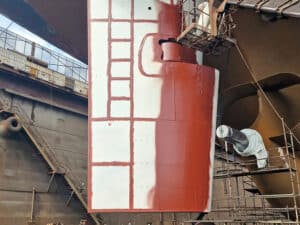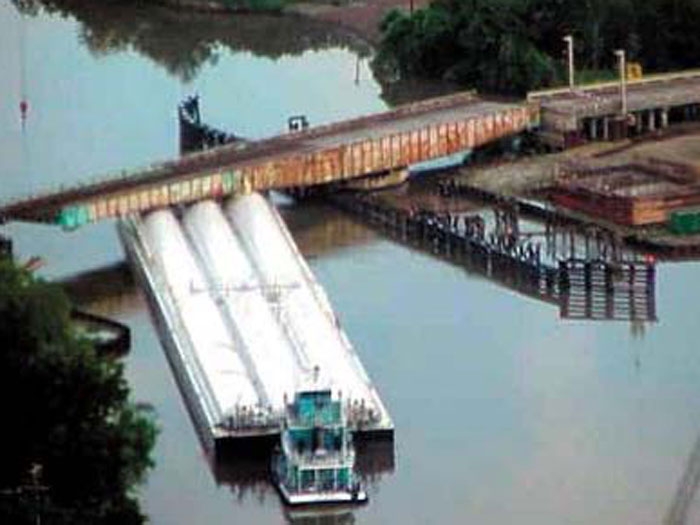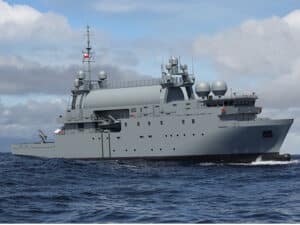
Safety alert stresses importance of air draft
Written by Nick Blenkey
Statistically, towing vessels and barges are the vessels most likely to be involved in bridge strikes where air draft is a factor
SEPTEMBER 9, 2014 — The U.S. Coast Guard Inspections and Compliance Directorate has issued a Marine Safety Alert (09-14) entitled “Air Draft is Critical.”
Following is the text:
Air draft is a term used to describe the distance from the top of a vessel’s highest point to its waterline. Vertical clearance is the distance in excess of the air draft that allows a vessel to pass safely under a bridge or object. The consequences of failing to consider air draft and to properly calculate a vessel’s vertical clearance under bridges, power lines, and other obstructions encountered during a passage can be catastrophic.
Over the last eleven years, overhead bridge strikes account for 1.2% of all vessel allisions investigated by the U. S. Coast Guard. That equates to 205 incidents, all of which involved a fixed, swing, lift or draw bridge. Over the same time period there were several more incidents where vessels have allided with power cables and other types of overhead obstructions. Statistically, towing vessels and barges are the most likely to be involved in bridge strikes where air draft is a factor. Barges equipped with or that carry land based cranes not properly stowed and those fitted with mooring spuds not properly adjusted are the most commonly involved components in overhead bridge allisions. These incidents have resulted in loss of life, millions of dollars in property damage, and inconvenience to entire communities who rely on the bridges and power cables.
The primary causal factor associated with these casualties was the lack of accurate air draft data for either the towing vessel or its tow being made available to the responsible Master or Mate. Knowledge of a vessel’s air draft is a critical component in determining whether a vessel can pass safely under a bridge or overhead structure.
The Navigation Safety Regulations found in 33 Code of Federal Regulations (CFR), Part 164 require the owner, master or operator of each vessel underway to ensure the following: that the person directing and controlling the movement of the vessel understands the limitations and constraints of their vessel(s) and tows, that they have knowledge of tides, currents, and dangers posed by visual or radar contacts, and that the vessel proceeds at a safe speed at all times.
Title 46 CFR 15.405 requires that each credentialed individual be familiar with the relevant characteristics of the vessel on which engaged, prior to assuming his or her duties. This includes, among other things, the general arrangement of the vessel. The term “general arrangement of the vessel” would include such details as overall length, breadth, deepest draft and air draft for both the towing vessel and any vessel(s) being towed.
The regulations which govern drawbridge operations are found in 33 CFR Part 117. They require that drawbridges not be opened unnecessarily. Before signaling for a bridge to be opened, a vessel owner or operator must determine if the vertical clearance is sufficient, after all lowerable vessel components that are not essential to navigation have been lowered, to pass safely under the bridge in the closed position. However, once it has been determined that safe passage can only be carried out by opening the bridge; drawbridges must open promptly and fully for the passage of the vessel.
Due to the frequency of overhead bridge allisions in the recent past, the Coast Guard strongly recommends that owners or operators of vessels ensure that:
- Every officer in charge of a navigational watch know the air draft of his/her vessel and tow and also know how to apply that knowledge using the resources available to him/her regarding the height and location of bridges, power lines, pipe lines and other elevated objects located within the navigable channel.
- Assumptions are not made regarding a vessel or its cargo’s “air draft” or of “bridge heights.” Specific data must be known when planning transits.
This Safety Alert is provided for informational purposes only and does not relieve any domestic or international safety, operational or material requirement. It was developed by the Towing Vessel National Center of Expertise and the Office of Investigations and Casualty Analysis. For questions or concerns please visit the Towing Vessel National Center of Expertise web site (www.uscg.mil/TVNCOE) and click on the “About Us” tab under TVNCOE Home.






Leave a Reply
You must be logged in to post a comment.